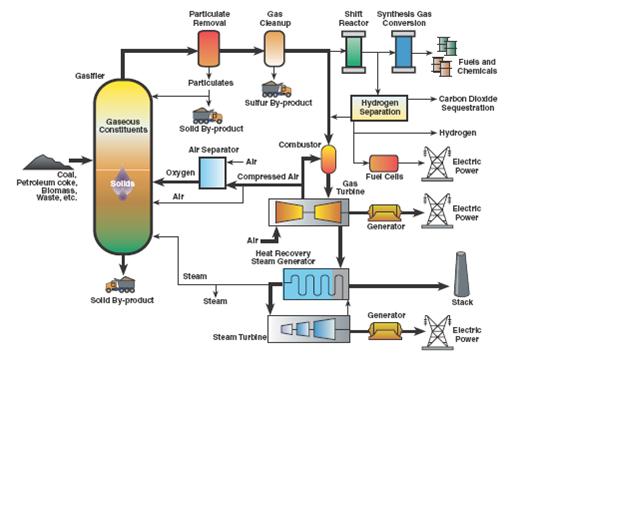Chemistry of clean coal

Currently coal-burning accounts for over 45% of American electricity. Once the coal is out of the ground, what are the environmental concerns? Mercury, sulphur, nitrogen compounds and CO2 emissions.
This clean coal dream is a big deal politically in the U.S. Half of the states have significant coal reserves. And one-fourth of all coal in the world is believed to be in the U.S. The coal supply known to exist in the U.S. has more energy potential than all the earth’s known petroleum reserves.
The National Energy Research Lab (NREL) within the Department of Energy (DOE) is embarked on a project to find a way to burn coal with minimum CO2 release into the atmosphere. CO2 is one of the greenhouse gases blamed for global warming. Over 3/4 of greenhouse gas emissions in the U.S. is CO2 from energy use or production.
One greentech company hired to work on the clean coal project is Reaction Design of San Diego. I spoke recently with Bernie Rosenthal, Reaction Design’s CEO. His company had just gotten a DOE grant to work on next generation coal-burning power plants. The most efficient ways of getting electricity from coal is via gasification. 
So Reaction Designs is working on modeling the chemistry needed to gasify coal, then burn it to produce electricity while capturing as much CO2 as possible. Rosenthal explained that it's crucial to understand the chemistry of what happens both during gasification of coal and then during combustion. That’s where his company comes in. Also, Reaction will work on ways to make the footprint, literally, smaller. Current technology would require enormous physical additions to coal burning plants just to gasify coal. There is no commercial scale plant in the U.S. that gasifies coal right now. What happens chemically in both the boiler and the combuster at a coal-burning plant will be examined by Reaction.
Whatever results and chemical models Reaction comes up with will be tested burning real coal under real conditions. Rosenthal says Reaction will also produce designs and chemical reaction models that can be scaled up to the size needed by the U.S. expanding appetite for electricity.
Other projects that Reaction Designs is working on include: modelling surrogate engine fuels for vehicles. This work was done with consortium of engine and fuel manufacturers. Results not made public yet. Some of that work may be applicable to power generation companies, says Rosenthal.
Reaction's worked with airplane engine manufacturers looking at possible future jet fuels. Looking also at non-fossil fuels for military as well. That's through a NASA project. And Reaction has a biofuels project with DOE. They're looking at next generation biofuels for autos.
Before the talkbacks begin: yes, I know there's much skpeticism about "clean coal." There is also much criticism of our current dependence on coal and the environmental results, of which I have frequently blogged. However, there is almost no chance we Americans will stop burning mounds of coal in the foreseeable future so cleaning it up seems like a worthwhile endeavor. And clean coal would be a wonderful tech to sell to China.